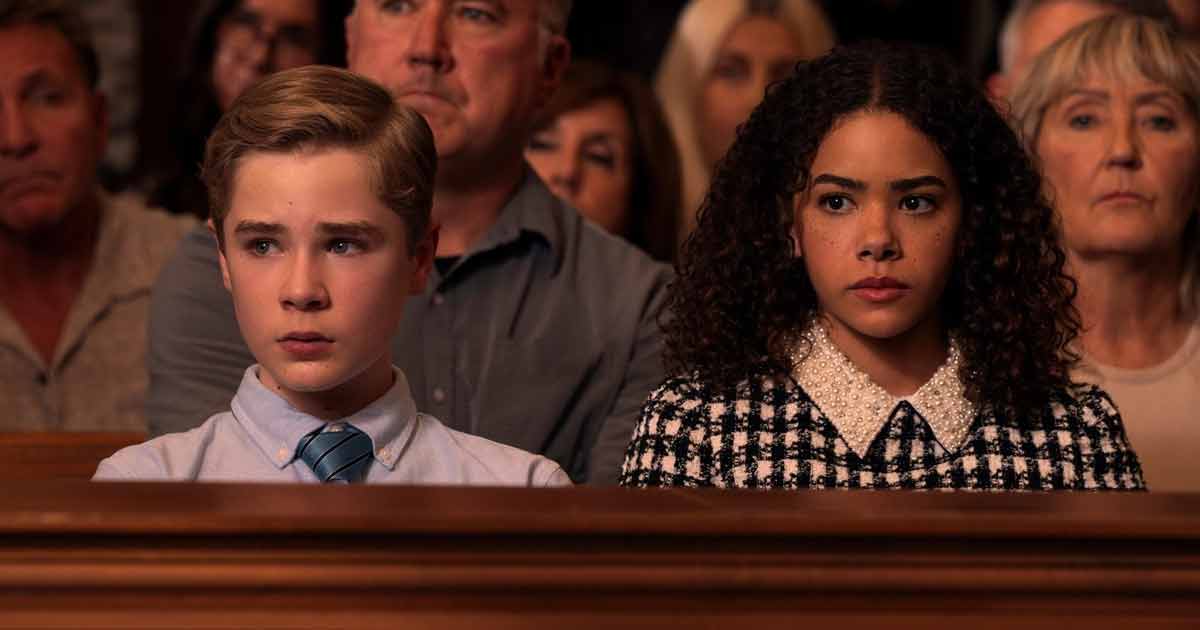There are certain images that slither past good taste and politics and sink their teeth straight into the subconscious. For instance: a man dressed in a tuxedo and a Ronald Reagan mask, using a gasoline pump as a flamethrower. He is torching his getaway vehicle and taking his time; the scene isn’t shot in slow motion, but I always remember it that way. In about thirty seconds, a cop will tackle him, prompting a long foot chase, but for now he waves his weapon like a kid with a sparkler on New Year’s Eve. We can’t see his expression, but Reagan’s face is grinning, and I’d like to imagine that the face underneath is, too. Don’t all bad guys dream of being children again?
The masked man is Patrick Swayze, the cop is Keanu Reeves, the woman who has sicced one on the other is the director Kathryn Bigelow, and the thing that binds them all together is “Point Break.” Those of us who love the film, which is showing in a new restoration, at Metrograph, talk about it in much the same way that others talk about “Showgirls”—i.e., as what used to be called a cult movie, before it became clear that there are only cults of varying sizes. It was released in 1991, the year of “Nevermind” and Desert Storm, though you could also think of it as the era when everyone in Hollywood movies looked slightly wet—appropriate here, since “Point Break” is about surfing. Also law enforcement and skydiving.
Describe any film too briskly and you risk turning it into a screwball comedy. (“Phantom Thread”: she feeds him poisonous mushrooms, but he digs it.) That said, the crucial thing to know about “Point Break” is that Keanu Reeves plays a star quarterback for the Ohio State Buckeyes named Johnny Utah who becomes an F.B.I. agent and goes undercover with a gang of surfers—led by Swayze’s character, a lion-maned fellow by the name of Bodhi, as in Bodhisattva—who dress up as ex-Presidents and rob banks. It sounds weird, but then all action thrillers—all genre movies—are weird, albeit in a way that we spend our lives learning to ignore. Not “Point Break,” which wears its weirdness so cockily that its cousins start to seem like the real oddballs.
The critical and commercial disaster of “K-19: The Widowmaker,” the solemn, award-heavy success of “The Hurt Locker,” the purse-lipped “fascist or feminist?” debate surrounding “Zero Dark Thirty,” the cowed verisimilitude of “Detroit”—all of this has clouded the truth that, for about ten years, Kathryn Bigelow was one of America’s best genre filmmakers. She could do action thrillers (“Blue Steel”), she could do horror (“Near Dark”), she could do science fiction (“Strange Days”). She could do all of these, while most of her peers specialized in one, because she never condescended to genre clichés; she accepted them as tools and put them in the service of pure spectacle, which is all they were ever there for. When Angela Bassett and Ralph Fiennes finally kiss at the end of “Strange Days,” you know that you’re watching a version of an ending you’ve watched a million times. But you can also sense that it is for the moments like this—the sight of these two beautiful people caked in blood and confetti—that the earlier, clumsier versions exist. At its best, spectacle needs no justification beyond itself.
Working with the cinematographer Donald Peterman, Bigelow packs “Point Break” ’s first act with dull, grayish-blue interiors that seem not filled with but made of L.A. smog: banks, offices, a sad indoor pool. One reason that the ensuing plot swerves feel right is that, after fifteen minutes of this, you welcome some fresh air and sunshine. As Utah embraces the ways of the surfer, the color palette moves from grayish to yellowish, and then, when Bodhi hips him to skydiving, from yellowish to cloudless blue. For the final scene, in which Bodhi finally gets his comeuppance, Bigelow takes us back to the beach, but also to those miserable smoggy grays, as though to suggest Utah’s world swallowing Bodhi’s whole.
Taken together, this can all feel like a string of vivid tableaux: a nighttime orgy of beach football; Reeves all pink and dewy, cuddling with his love interest in a black-sheeted bed; Swayze (well, mostly his stunt double Matt Archbold) riding giants, longboard muddying the air with seminal spurts of seawater. When you’re not gulping down a set piece, you’re starved for the next one—which is only right, since chasing the next big rush is more or less the point of “Point Break.” One particular rush is conspicuously un-chased: nobody watches this film without wondering why Bodhi and Utah don’t just sleep together. (“You want me so bad, it’s like acid in your mouth,” the surfer tells the cop.) But you could make a similar observation about almost any macho American movie of the period—compared with Sylvester Stallone and Carl Weathers horsing around in the surf in “Rocky III,” Reeves and Swayze look practically monkish. Besides, “Point Break” is the rare action flick that explains why its homoerotic subtext never becomes text: with death sports, Bodhi and Utah have discovered something better than sex. The catch is that their thrill-seeking is non-fungible and thus ultimately solitary; in “Point Break,” there is only you and your bottomless appetite. Surfing leads the adrenaline junkie to bank heists, and onward to free-falling, kidnapping, and bigger waves. Utah’s partner orders two meatball subs and then, before he’s taken a bite, regrets not ordering three.
Genre films, to steal a point Umberto Eco made about comic books, are like dreams, familiar even when they’re chaotic. The straight-edged detective with a heart of gold may go to New York, or Hawaii, or outer space, but he will only ever be a straight-edged detective with a heart of gold. The principle applies to “Point Break,” except that the chaotic and the familiar are dialled up to eleven, and difficult to tell apart. Reading reviews from 1991, I was struck but not surprised by how few of them, even the nasty ones, describe the film as goofy or campy. Weirdness only feels weird when you have something normal to measure it against, and, in W. Peter Iliff’s screenplay, the characters speak in phrases that sound almost human but aren’t. A handful, taken from the first few minutes:
Fatted on such morsels, you proceed without protest to the larger delights of robbing-meets-surfing and Reagan-meets-flamethrower, which somehow don’t seem thrown together; it’s more like they were always floating through the collective unconscious, waiting to be turned into art.
“Point Break” is all about pushing it to the limit, so allow me to take this a step further. Once you’ve been numbed to the oddities of the plot and dialogue, what jump out at you, paradoxically, are the bits you already recognize. Consider Keanu Reeves’s voice. In all likelihood, you have been hearing this voice for years; it’s Keanu Reeves, the guy who speaks an obscure dialect of English called Uh, the actor who, in the early nineties, was known to millions as half of Bill and Ted. Which makes it all the more fascinating that Reeves is playing a straight-edged detective who is pretending to be a SoCal guy. There is a brief, early scene in which Utah, dipping his toe into his undercover persona, affects a surfer-bro accent, i.e., his own but even drawlier. It is a genuinely disorienting moment—reminiscent of the famous tale of how Charlie Chaplin entered a Chaplin lookalike contest and got second—so that when Reeves returns to his “normal” voice in the next scene, it’s as though you’re hearing him for the first time. Each “uh” is a symphony.
As with Keanu Reeves’s voice, so with everything you know, or thought you knew, from other movies: the disillusioned hero throwing his badge in the muck; the novice turning into a pro in a single montage; the detective with a heart of gold mourning his partner’s death with a “Noooooo” so long you could stand up, leave the theatre, answer some work e-mails, walk back to your seat, and still be less than halfway through. To ask what Bigelow does, exactly, to make these things seem so jarring is to miss the point. She doesn’t have to do anything. It’s been suggested that the eeriest part of “Blue Velvet” is its cheerful white-picket-fence suburbia, which David Lynch exposes, by association with ears and bugs, as the Surrealist playground it was all along. In “Point Break,” the same goes for the welter of clichés known as the American action movie: another big rush, dreamed up by overgrown children, meant to keep us all from losing our minds for good. ♦







